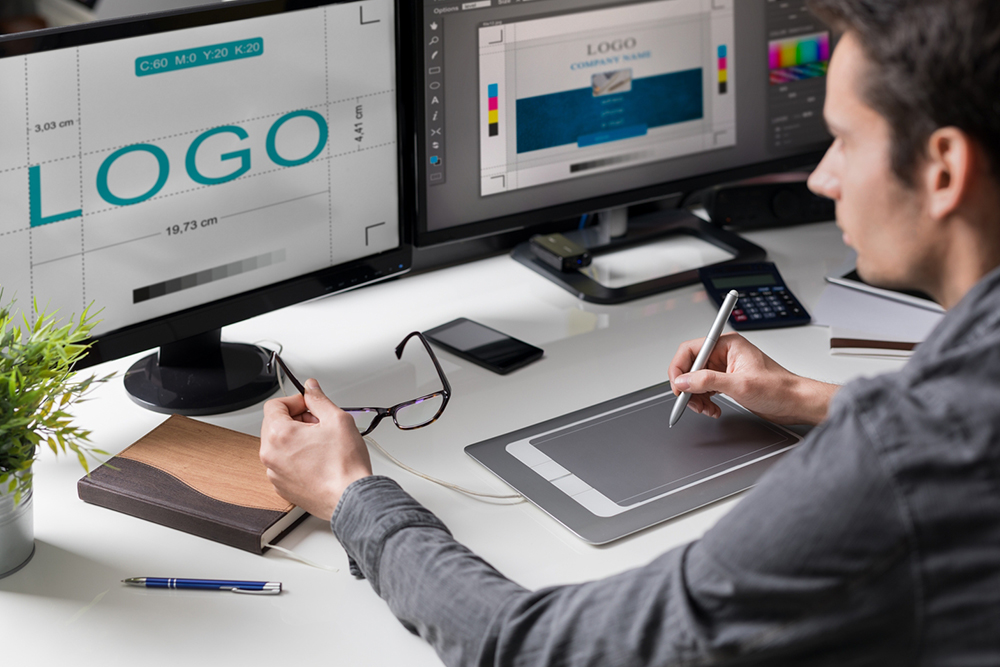Comprehensive Guide to the 10 Essential Fields in Graphic Design
This comprehensive guide explores ten vital areas within graphic design, from branding and web UI to motion graphics and packaging. It highlights the skills, challenges, and career opportunities in each domain, helping aspiring designers navigate their professional paths effectively. By understanding these key fields, professionals can enhance their creativity and technical expertise, staying competitive in a rapidly evolving industry. Whether interested in visual identity, digital interfaces, or multimedia production, this article provides valuable insights for growth and specialization in graphic design.

Comprehensive Guide to the 10 Essential Fields in Graphic Design
Graphic design is a vibrant and multifaceted discipline that plays a pivotal role in shaping visual communication across numerous industries. By mastering various areas within graphic design, professionals can unlock diverse career opportunities, from branding and advertising to digital interfaces and multimedia. Whether you're an aspiring designer or a seasoned professional seeking to expand your skills, understanding the core branches of graphic design is vital. Participating in specialized courses, whether online or in-person, enables learners to grasp fundamental principles, explore different avenues of specialization, and refine their creative and technical skills. This comprehensive guide elucidates ten essential fields within graphic design, revealing the unique challenges and creative possibilities each offers.
Proficiency in these areas not only enhances employability but also fosters innovation in visual storytelling. From the branding of new startups to complex motion graphics for entertainment, each domain demands a distinct skill set, an eye for detail, and a passion for creative problem-solving. As technology continues to evolve, so too do the tools and techniques available to designers, making continuous learning and adaptation crucial in this dynamic field.
Let’s delve into each of these key areas, examining their roles, significance, and the skills necessary to excel.
1. Brand Identity Design
Creating a memorable and effective visual identity for businesses, products, or services is the cornerstone of brand identity design. This field involves developing logos, choosing harmonious color schemes, and establishing consistent visual elements that encapsulate a brand’s personality and values. A well-designed brand identity fosters recognition, builds trust, and sets a company apart in a crowded marketplace. Successful brand identity designers understand the psychological impact of colors, typography, and imagery, and know how to craft a distinctive aesthetic that resonates with target audiences. They often work closely with marketing teams to ensure visual consistency across all platforms, including packaging, advertisements, and digital media.
2. Website UI/UX Design
As the digital landscape continues to expand, website UI (User Interface) and UX (User Experience) design have become vital areas within graphic design. UI design focuses on creating visually appealing interfaces that are intuitive and easy to navigate, while UX emphasizes optimizing the overall user journey. Aspiring web designers can enroll in specialized courses—both online and traditional—to learn about contemporary tools, wireframing, prototyping, and usability principles. Mastery of this field leads to the development of engaging websites and applications that improve user satisfaction, increase engagement, and drive conversions. Understanding color theory, typography, and interactive elements is essential, as is familiarity with coding basics and design software.
3. Advertising Art
Graphic designers working in advertising craft compelling visual content aimed at promoting products, services, or brands. This includes designing banners, print ads, billboards, and commercials for television and digital platforms. The goal is to produce eye-catching visuals that grab attention quickly and communicate key messages effectively. Creativity, copy integration, and an understanding of marketing psychology are crucial in this domain. Advertising art requires staying updated with current trends, mastering layout principles, and developing the ability to work under tight deadlines to produce impactful visuals that can boost brand visibility and foster customer engagement.
4. Marketing Visuals
Marketing designers develop a wide array of visual materials to support promotional campaigns. These include packaging designs, social media graphics, online banners, and website imagery. Skillful use of typography and color helps capture attention and deliver messages clearly. While closely related to brand identity design, marketing visuals focus more on promoting specific products or services within campaigns. Success in this area hinges on understanding audience preferences, current design trends, and digital marketing strategies to create visuals that effectively drive sales and brand loyalty.
5. User Interface & Interactive Media
This specialization involves designing interfaces for websites and applications that are both aesthetically pleasing and highly functional. Good UI design includes creating intuitive menus, buttons, icons, and layout structures, while UX involves understanding user behavior and optimizing interactions. Interactive media design is increasingly important in a world where digital experiences are central to commerce, education, and entertainment. Designers in this field must grasp usability principles, human-computer interaction, and advanced visual techniques. Familiarity with prototyping software, coding languages like HTML/CSS, and animation tools is often essential for creating seamless, engaging digital environments.
6. 3D Graphic Art
Using sophisticated 3D modeling software, designers create realistic three-dimensional images and animations for industries such as architecture, healthcare, gaming, and entertainment. This field demands a deep understanding of light, textures, surface properties, and spatial relationships to produce visuals that are both accurate and compelling. 3D design has become integral in product visualization, virtual reality, and special effects. Mastery of software like Autodesk 3ds Max, Cinema 4D, or Blender is critical, along with a keen eye for detail and artistic sensibility.»
7. Typography & Font Design
The art of arranging type is a specialized discipline within graphic design that focuses on the aesthetic and functional aspects of fonts and text layout. Typography specialists work on selecting and creating typefaces, adjusting spacing, and aligning text to enhance readability and visual harmony. Effective typography blends artistic expression with technical precision, influencing how messages are perceived and understood. This field is fundamental in branding, editorial design, and advertising, where the right choice of fonts can elevate a brand’s image or improve user engagement.
8. Vehicle Graphics & Wraps
Designing graphics for vehicle wraps involves creating vibrant, large-scale visual artwork tailored to fit on vinyl sheets that cover vehicles. These wraps serve as mobile advertisements, showcasing logos or promotional messages across wide audiences. Designing for vehicle wraps requires an understanding of scale, proportions, and the physical contours of different vehicle types. The artwork must be both visually striking and durable to withstand weather conditions and time, making this a unique challenge within the graphic design landscape. Excellent craftsmanship and attention to detail are essential to ensure the finished product aligns perfectly with the vehicle’s shape and intended branding message.
9. Motion Graphics
Motion graphics involve creating animated visuals for television, films, digital media, and social platforms. This field combines graphic design, animation, and video production techniques to develop engaging titles, intros, commercials, and music videos. Staying current with evolving software like Adobe After Effects, Cinema 4D, and integrating 3D elements is vital. Motion graphic artists skillfully manipulate text, images, and sound to produce dynamic visual stories that capture audience attention and communicate messages effectively. This specialization offers exciting opportunities for creativity and storytelling in entertainment, advertising, and corporate communication sectors.
10. Packaging Design
Packaging design is crucial in product marketing, intertwining aesthetics with functionality. Designers create attractive, protective packaging that not only preserves the product but also appeals to consumers on shelves. This involves selecting appropriate materials, designing shapes, and incorporating branding elements like logos and graphics. Effective packaging increases product visibility, conveys brand values, and influences purchasing decisions. In addition to aesthetics, designers must consider manufacturing processes, sustainability, and user convenience, making packaging design a complex yet rewarding field with direct impact on a product’s market success.





